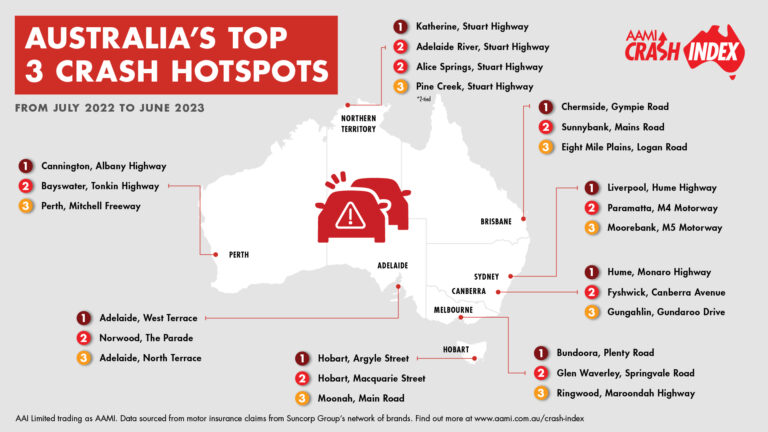The hotspots that are most prone to collisions are typically major roads that intersect with local streets, or precincts with high traffic, educational centres, and shopping malls.
For the sixth year in a row, Plenty Road in Melbourne's northeast takes the top spot for Australia's most dangerous road.
“Analysis of our crash data on the country’s most dangerous crash site, Melbourne’s Plenty Road, Bundoora, revealed fewer crashes compared to 2022. This was in line with a 26 per cent reduction of motor accident claims from 2019 (prior to a 10-kilometre speed reduction and COVID-19 lockdowns when many cars were off the roads) to 2023 (once the permanent speed reduction was in place),” Ms Hall said.
The Liverpool stretch of the Hume Highway was crowned (for the sixth year in a row) Sydney’s most dangerous road. The nearby shopping centre and hospital bring in lots of traffic, making it a notorious road Sydneysiders know all too well.
Another infamous hotspot for accidents is Canberra’s Monaro Highway, which will see additional safety works implemented at the end of this year to help keep the road safer for everyone.
Gympie Road in Chermside holds onto Brisbane’s top spot for another year. The key route to and from the northern suburbs is notorious for its peak-hour traffic.
Adelaide, Canberra, Tasmania and the Northern Territory all welcomed new number-one hotspots in 2023, while Brisbane, Melbourne, Perth and Sydney’s number-one hotspots retained their top position for another year.
Australia's top crash hotspots. Image: Suncorp Group Australia

